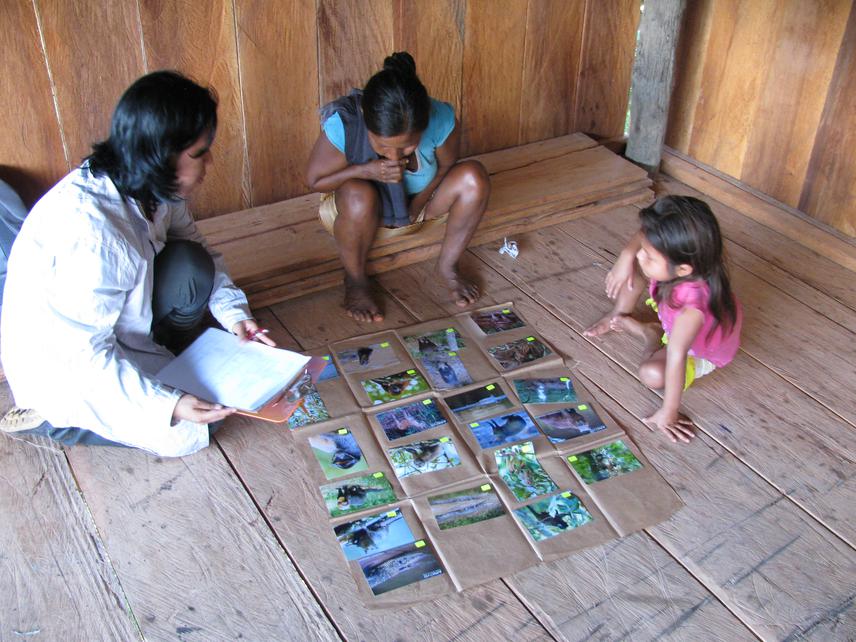Maribel Recharte
Other projects
6 Jul 2009
Conflict Between Giant River Otter (Pteronura brasiliensis) Populations and Fishing Communities in the Northeastern Peruvian Amazon
We will investigate the perceptions of giant otters and measure otter-human interactions using participatory fishing registers of otter sightings and net damage in Pucacuro National Reserve.

Interview in the community of Nueva Vida – River Napo. © Chelsie Romulo.
In a previous RSG grant, I interviewed fishermen in the Pacaya-Samiria National Reserve. People blamed otters for damaging fishing nets, and reducing fish populations, implying a reduction in financial income due to recovering giant otter populations. Nets are valuable to local people, and fish their main source of protein. However, actual contact with fishermen appeared infrequent. Most people did not see direct benefits from otters and did not perceive any importance for tourism. Furthermore, benefits from tourism did not reach every family, especially not active fishermen. Our conservation education focusing on giant otters was well received. We propose to extend activities to a wider area, now including the Pucacuro National Reserve, comparing human-wildlife interactions for various species putting those with giant otters into perspective.
On the Rio Napo, Pucacuro and Pacaya-Samiria National Reserves, we will interview representative households (fishermen, hunter, park guards, people involved with conservation), and do focus groups with communities on attitudes towards giant otters in communities newly exposed to this species where the range is expanding. In new areas, this research forms the basis of work to improve perceptions of otters, identifying issues to be tackled directly through education. In areas we have worked before, these interviews will test the effectiveness of our previous conservation education work.
Measure otter-human interactions with participatory fishing registers of otter sightings and net damage. The fishermen and local people make fishing records for the Park authorities. Working with the Reserve we will add otter sightings and net damage data to these forms. This will help illustrate the low relative frequency of interactions and net damage by otters.
Calculate the home range and densities of giant otter groups in Pucacuro NR using camera traps and direct observations using the unique throat markings. These data will estimate relative frequency of interactions between people and otters in different areas.
Community meetings and presentations – disseminating results of our work to reduce the perception of otters as a competitor and damager of nets. If viable, we will promote the potential of otters in driving tourism by explaining the draw of this species to visitors.
Assisting the Park to develop tourism. If the perceived costs are lowered significantly by successful dissemination, a relatively small benefit, i.e. even occasional otter tourism, should be enough to mitigate threats to giant otters and avoid persecution. We will draft a tourism feasibility report.